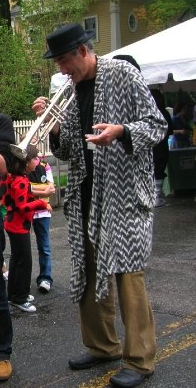There are often universal, or at least consensual emotional responses to music. Minor and major are more than just the mechanical act of flatting the third. But, we always bring our own backstory too, sometimes conscious, sometimes not and once in a while we are blindsided by our own reaction and deeply moved by music that other people find merely "pleasant," or "well-crafted."
 |
| Abbey Lincoln |
In "Dinji," from Wayne Shorter's "Super Nova" album, a very personal vocal by Maria Booker is bookended by music evoking a wider, more cosmic palette. This deepens the effect of the vocal, which enters at about 4:00.
In the LP "Clap Hands, Here Comes Charlie," comes Ella with "Good Morning Heartache," a beautiful marriage of music, lyric and musician. No surprise at its effect.
Here's "You Are My Sunshine," off the album "The Outer View." The arrangement George Russell wrote showed that he grasped the many layers of subtext in the song and Sheila Jordan's relationship to it.
Rahsaan and "A Laugh for Rory." Why this song? I'm not sure, but the combination of the real child's voice, the bubbling lightness of the head contrasted with the dramatics of the solos tripped a wire in me.
Finally, the song with a mojo that struck me like thunder is "Throw It Away," by Abbey Lincoln from "A Turtle's Dream." Why? I'll let the mystery continue to breathe.



.jpeg)


.jpeg)
